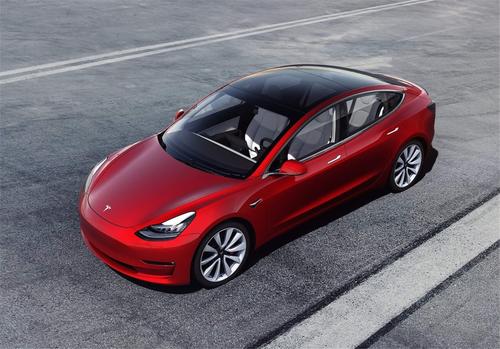BYD เป็นผู้นํา, ตามด้วยโฟล์คสวาเกนและโตโยต้า: รถยนต์ที่ขายดีที่สุดของจีนในเดือนมิถุนายน 2023

ตามข้อมูลที่เผยแพร่โดยสมาคมรถยนต์นั่งส่วนบุคคลของจีน (ซีพีซีเอ), ตลาดรถยนต์จีนเห็นการขายของ 1.894 รถยนต์ใหม่ล้านคันในเดือนพฤษภาคม 2023. นี่แสดงถึง 8% เพิ่มขึ้นเมื่อเทียบกับเดือนพฤษภาคม 2022, แต่ 2% ลดลงจากเดือนมิถุนายน 2022. ในบรรดายอดขายเหล่านี้, 448,000 ยานพาหนะเป็นรถยนต์ไฟฟ้า (รถยนต์ไฟฟ้า), ขณะ 217,000 เป็นรถยนต์ไฟฟ้าปลั๊กอินไฮบริด (PHEVs), เรียกรวมกันว่ายานยนต์พลังงานใหม่ (NEVs). NEVs ที่คิดเป็น 35% ของยอดขายทั้งหมด.

ในแง่ของส่วนแบ่งการตลาด, บีวายดี กลายเป็นแบรนด์รถยนต์ที่มียอดขายสูงสุดในประเทศจีน, ขาย 220,600 ยานพาหนะและการจับ 11.65% ส่วนแบ่งตลาด. โฟล์คสวาเกนคว้าตําแหน่งที่สอง, ขาย 192,070 รถยนต์และครองส่วนแบ่งการตลาดของ 10.14%. โตโยต้า คว้าตําแหน่งที่สามด้วย 157,140 รถยนต์ที่ขาย, การบัญชีสําหรับ 8.30% ส่วนแบ่งตลาด. ฮอนด้าตามมาอย่างใกล้ชิดในอันดับที่สี่, ขาย 112,867 ยานพาหนะและมีส่วนแบ่งการตลาด 5.96%. Changan ปัดเศษห้าอันดับแรก, ขาย 85,248 รถยนต์และครองส่วนแบ่งการตลาดของ 4.50%.
โดยเฉพาะอย่างยิ่ง, เท สลา มียอดขายเพิ่มขึ้นเนื่องจากการส่งมอบจํานวนมากในช่วงสิ้นไตรมาส, ผลักดันให้ขึ้นสู่อันดับที่หกในตลาดจีน.

ภายในตลาด NEV ของจีน, BYD สร้างสถานะที่แข็งแกร่งทั้งในกลุ่ม EV และ PHEV. BYD ยังคงเป็นผู้นําในตลาด EV บริสุทธิ์, ขาย 110,219 ยานพาหนะและสั่งการที่สําคัญ 24.60% ส่วนแบ่งตลาด. เทสลาอยู่ในอันดับที่สองด้วย 74,212 รถยนต์ที่ขาย, การคิดส่วนแบ่งการตลาดของ 16.57%. GAC ไอออน คว้าตําแหน่งที่สามด้วย 45,013 ยานพาหนะที่ขาย, การคว้าส่วนแบ่งการตลาดของ 10.05%. Wuling และ ฉางอาน เป็นหนึ่งในแบรนด์ไฟฟ้าบริสุทธิ์ที่ขายดีที่สุด, ครองตําแหน่งที่สี่และห้า.

วิเคราะห์โมเดลยอดนิยมในตลาดจีน, ดิ เทสลารุ่น Y กลายเป็นยานพาหนะที่ขายดีที่สุดด้วย 51,471 หน่วยที่ขาย, ตามด้วย BYD Qin Plus ด้วย 38,197 หน่วย, และ Nissan Sylphy ด้วย 31,054 รถ ถัง. โมเดลเหล่านี้แสดงให้เห็นถึงประสิทธิภาพการขายที่แข็งแกร่งและสะท้อนให้เห็นถึงความต้องการของผู้บริโภคที่สําคัญในตลาด.


 รถยนต์ในประเทศจีน
รถยนต์ในประเทศจีน